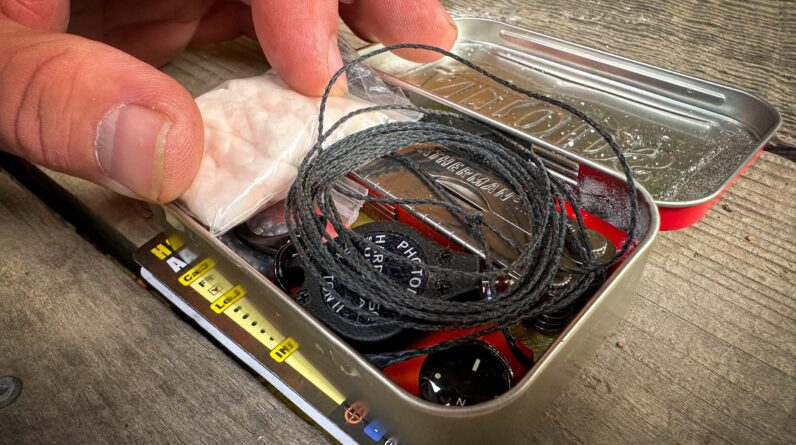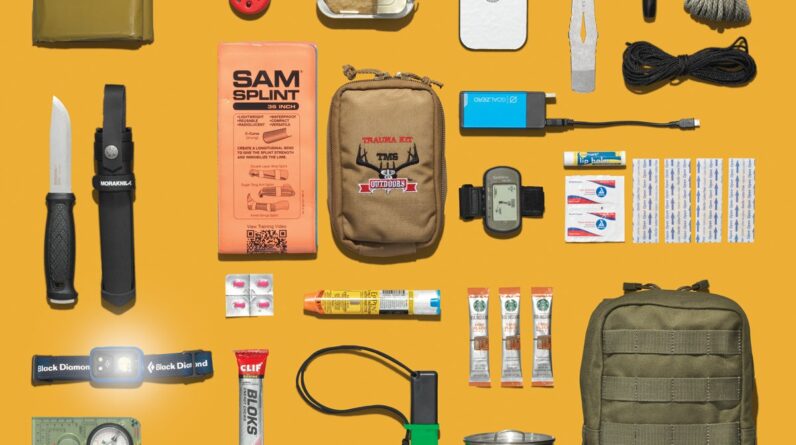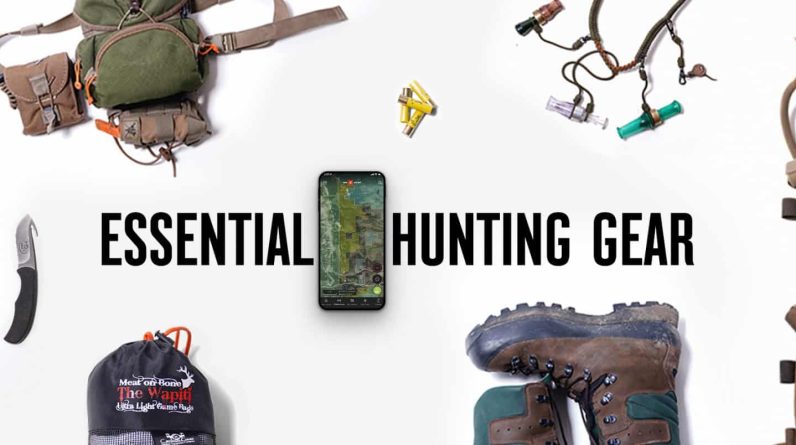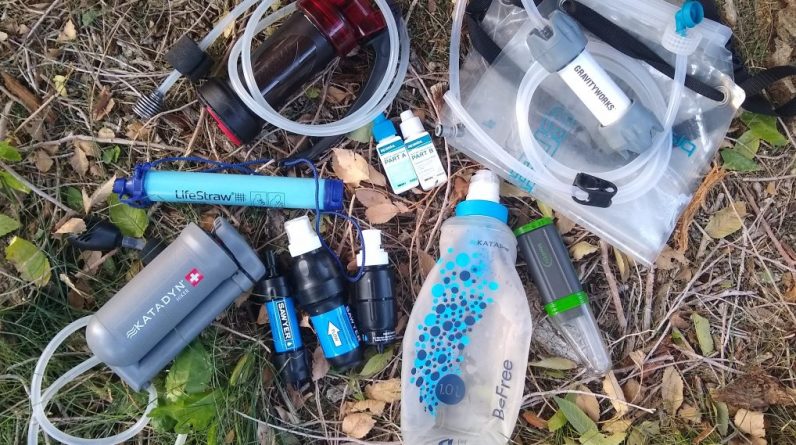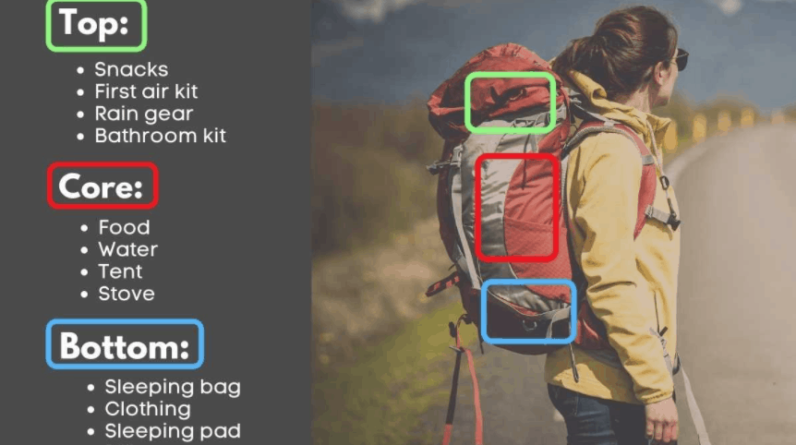
Heading out on a camping trip can be exciting and exhilarating, but if you’re not well-prepared, it can quickly turn into a chaotic and frustrating experience. That’s why knowing how to efficiently pack your backpack is crucial. In this article, we’ll explore the top tips that will help you make the most of the limited space in your backpack, ensuring that you have all the essentials without the unnecessary bulk. Whether you’re a camping enthusiast or a newbie, these tips will undoubtedly make your next camping adventure much more enjoyable. So, let’s get started!

This image is property of www.msrgear.com.
Choosing the Right Backpack
When it comes to packing for a camping trip, choosing the right backpack is essential. The first thing you need to consider is the size of the backpack. A backpack that is too small won’t be able to fit all your essential gear, while a backpack that is too large will be bulky and heavy to carry. Look for a backpack that is spacious enough to hold all your items, but still comfortable to wear for extended periods.
Another important factor to consider is the weight distribution of the backpack. You want to make sure that the weight is evenly distributed to prevent strain on your back and shoulders. Look for backpacks with padded shoulder straps and a hip belt, as these features help to distribute the weight more effectively. By ensuring proper weight distribution, you’ll be able to hike longer distances without feeling fatigued.
In addition to size and weight distribution, you should also pay attention to the material of the backpack. A durable and waterproof material is key to protecting your gear from the elements. Look for backpacks that are made from high-quality materials such as nylon or polyester, as they are known for their durability and water resistance. A waterproof backpack will keep your belongings dry even in unexpected rain showers.
Organizing Essentials
Once you have selected the right backpack, it’s time to start organizing your essentials. The first step is to create a packing list. Jot down everything you need to bring, from clothes and toiletries to cooking utensils and camping gear. Having a packing list will not only help you stay organized but also ensure that you don’t forget any important items.
Next, consider grouping your items by category. This will make it easier to find what you need when you’re out in the wilderness. For example, keep all your cooking utensils and cookware together in one section, and your sleeping gear in another. By organizing your items in this way, you’ll be able to quickly locate what you need without rummaging through your entire backpack.
To further optimize your organization, consider using packing cubes or compression sacks. These handy accessories can help you maximize the use of space in your backpack and keep everything neatly organized. Packing cubes are great for separating different types of clothing or gear, while compression sacks can compress bulky items like sleeping bags or jackets, making them more compact.
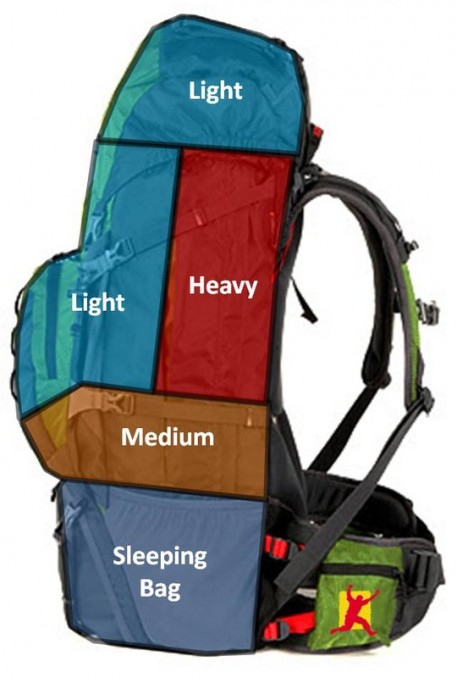
This image is property of www.worldofcamping.co.uk.
Making Use of Space
When it comes to efficiently packing a backpack, making use of every inch of space is essential. Start by utilizing the vertical space within your backpack. Roll your clothes tightly and stack them upright, as this takes up less space compared to folding them. Additionally, you can use the space inside your shoes by stuffing them with socks or small items.
Another strategy is to pack strategically in pockets and compartments. Many backpacks come with several pockets and compartments designed for specific items. Utilize these spaces by packing items that you frequently need in easily accessible pockets, while storing less frequently used items in the main compartment.
To further optimize space, don’t forget to fill empty gaps and utilize small spaces. For instance, you can stuff socks or small clothing items into gaps between larger items to utilize space efficiently. Additionally, you can use small containers or bags to store miscellaneous items like chargers or medication, preventing them from getting lost or taking up unnecessary space.
Prioritizing Weight Distribution
Proper weight distribution within your backpack is crucial for your comfort and overall well-being during a camping trip. One tip is to position heavy items close to your back. Placing heavier gear such as your cooking equipment or water reservoir near your back will help distribute the weight evenly and prevent excessive strain on your shoulders.
Distributing weight evenly throughout your backpack is another important consideration. Avoid placing all the heavy items on one side, as this can throw off your balance and make the backpack feel unbalanced. Instead, distribute the weight by packing heavier items in the top and middle sections of your backpack, while keeping lighter items towards the bottom.
Consider carrying weight on your hips as well. Many backpacks come with a hip belt that can help transfer some of the weight to your hips, which are better equipped to handle heavy loads than your shoulders. Adjust the hip belt for a snug fit, and you’ll feel the difference in weight distribution and overall comfort.
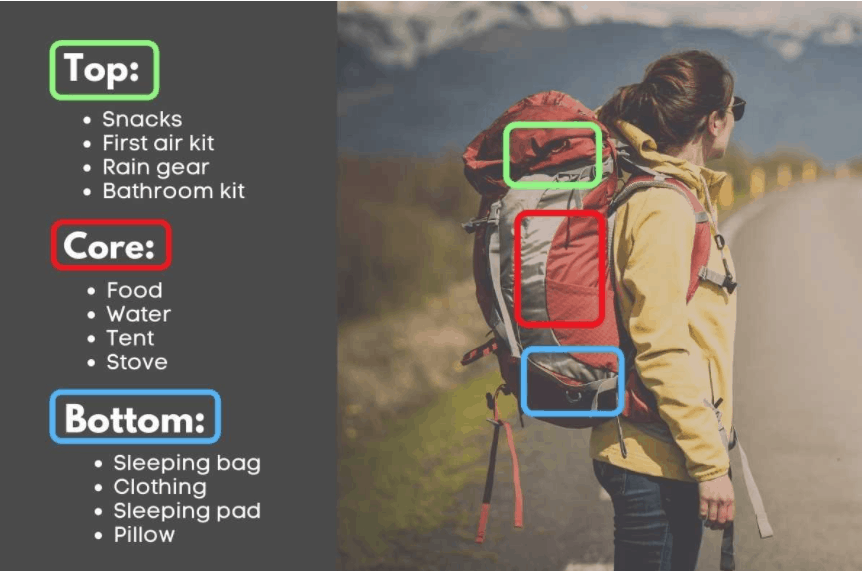
This image is property of www.thecrazyoutdoormama.com.
Layering Your Gear
Efficiently layering your gear can make a significant difference in how easily you can access your belongings during your camping trip. Keep frequently used items easily accessible by placing them in outer pockets or in the top compartment of your backpack. This way, you won’t have to dig deep into your backpack every time you need something.
Layer items based on the frequency of use. For example, your toiletries, snacks, and map should be in a separate compartment or pocket that is easily reachable. Items like spare clothes or cooking gear that you may not need until later can be stored deeper inside your backpack.
When it comes to positioning your sleeping bag, it’s best to place it at the bottom of your backpack. This not only helps stabilize your center of gravity but also provides a cushioning effect for other gear stored above it. Storing your sleeping bag first also allows you to pack other items around it more efficiently.
Keeping Important Gear Handy
During a camping trip, it’s essential to keep important gear easily accessible at all times. For items like a compass or map, have a dedicated pocket or compartment in your backpack. This will make it quick and easy to retrieve them whenever needed, without having to search through your entire backpack.
Similarly, keeping water easily accessible is crucial to stay hydrated throughout your camping adventure. Many backpacks have side pockets or hydration sleeves specifically designed to hold water bottles or hydration reservoirs. Be sure to utilize these spaces to have water readily available without having to stop and dig through your backpack.
Consider using a hydration system for ultimate convenience. A hydration reservoir with a tube allows you to drink water on the go without even having to take off your backpack. Simply sip from the tube whenever you’re thirsty, and you’ll stay hydrated without any hassle.
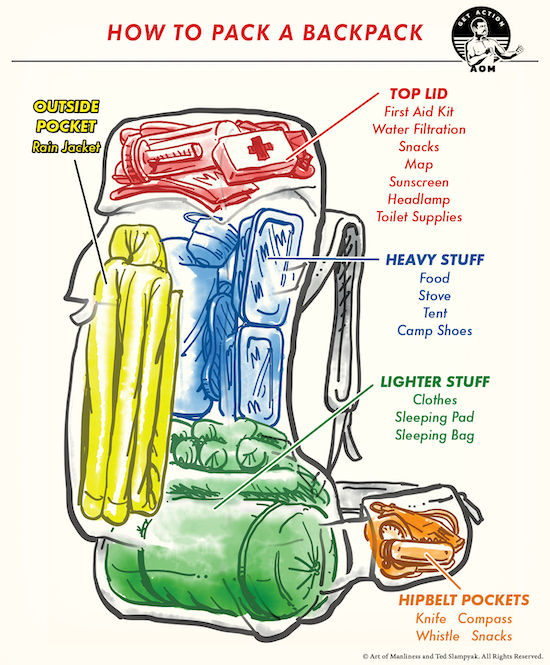
This image is property of content.artofmanliness.com.
Considerations for Food and Cookware
When packing food for your camping trip, opt for lightweight and resealable bags. Rather than carrying heavy and bulky packaging, transfer your food into lightweight plastic bags or resealable containers. Make sure to label them with the contents and the date to help you stay organized and know when to consume each item.
In terms of cookware, choose compact options to save space in your backpack. Look for cookware sets that come with nesting pots and pans, as these can be stacked together to minimize the overall size. Additionally, consider the material of the cookware. Lightweight materials like titanium are not only durable but also help reduce the weight of your backpack.
Keep your cooking utensils and spices to a minimum. Select versatile utensils that can be used for multiple purposes, such as a spatula that can double as a spoon. Instead of bringing a variety of spices, opt for a multi-purpose seasoning blend that can add flavor to various dishes. By consolidating your cookware and ingredients, you’ll save space and make packing more efficient.
Planning for Emergency Situations
While we hope for the best during a camping trip, it’s always important to be prepared for emergency situations. Pack a first aid kit in an easily accessible location within your backpack. Make sure it is well stocked with essentials like bandages, antiseptic wipes, painkillers, and any necessary medications.
Carry emergency supplies like a whistle and flashlight. These small items can be lifesavers in case you get lost or find yourself in a difficult situation. Attach a whistle to your backpack strap for quick access, and pack a compact flashlight with spare batteries to ensure you have light when needed.
Including a backup means of starting a fire is also crucial for emergency situations. Pack waterproof matches or a lighter in a waterproof container. Additionally, consider bringing fire starters such as cotton balls soaked in petroleum jelly or a small portable fire starter kit. These items can provide a reliable source of warmth and light in case of emergencies.
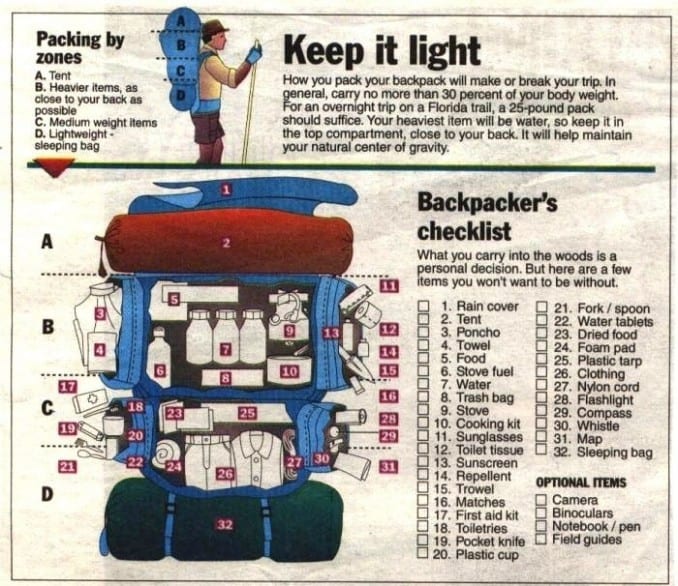
This image is property of www.worldofcamping.co.uk.
Keeping Clean and Hygienic
Maintaining cleanliness and hygiene while camping is essential for your comfort and well-being. Bring appropriate toiletries and hygiene products such as toothbrush, toothpaste, biodegradable soap, and hand sanitizer. Pack them in leak-proof containers to avoid any mess inside your backpack.
Don’t forget to include a microfiber towel in your packing list. Microfiber towels are lightweight, highly absorbent, and quick-drying, making them ideal for camping trips. They take up less space compared to regular bath towels and can be easily packed into the outer pockets of your backpack for quick access.
For waste management, it’s important to have a system in place to dispose of your trash properly. Bring along some plastic bags to store your waste, including wrappers, food scraps, and any other garbage generated during your camping trip. This will keep your backpack clean and odor-free, while also helping to minimize your impact on the environment.
Considerations for Clothing
When it comes to packing clothing for a camping trip, it’s important to consider the weather and activities you’ll be participating in. Check the weather forecast for your camping location and pack accordingly. If it’s going to be warm, bring breathable and lightweight clothing. If it’s going to be cold, pack warm layers and thermal underwear.
Opt for lightweight and quick-drying materials. Fabrics like nylon and polyester are great choices as they are lightweight, moisture-wicking, and dry quickly. Avoid packing heavy cotton clothing as it takes a long time to dry and can become uncomfortable when wet.
Bring versatile clothing pieces that can be worn in different combinations. For example, pack a few basics like a comfortable pair of pants, a moisture-wicking t-shirt, and a lightweight jacket. These items can be mixed and matched to create different outfits depending on the weather and activities.
By following these top tips for efficiently packing your backpack for a camping trip, you’ll be well-prepared for your outdoor adventure. Remember to choose the right backpack size, consider weight distribution, and look for durable and waterproof materials. Organize your essentials with a packing list and utilize packing cubes. Make use of space by packing strategically and filling empty gaps. Prioritize weight distribution by positioning heavy items close to your back and distributing weight evenly. Layer your gear based on frequency of use and keep important items handy. Plan for emergency situations and keep clean and hygienic with the appropriate gear and waste management system. Finally, consider the weather and activities when packing clothing. With these tips in mind, you’ll be ready to enjoy a memorable camping trip with a backpack that is efficiently packed and tailored to your needs.

